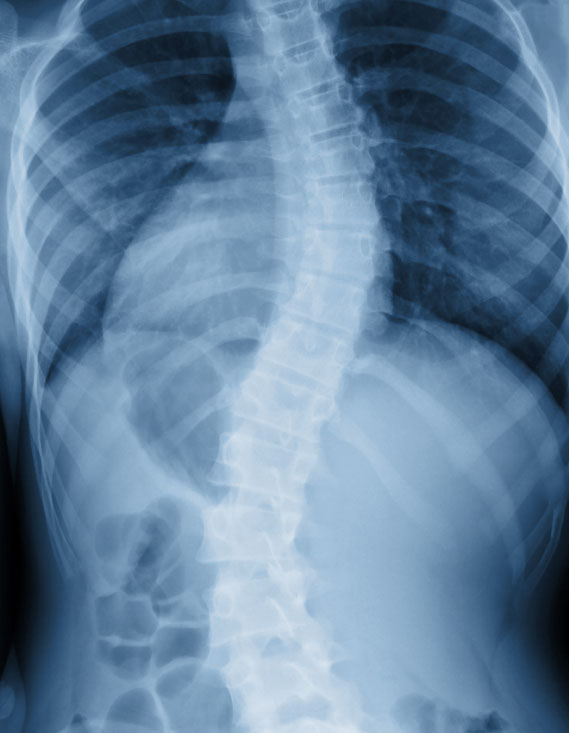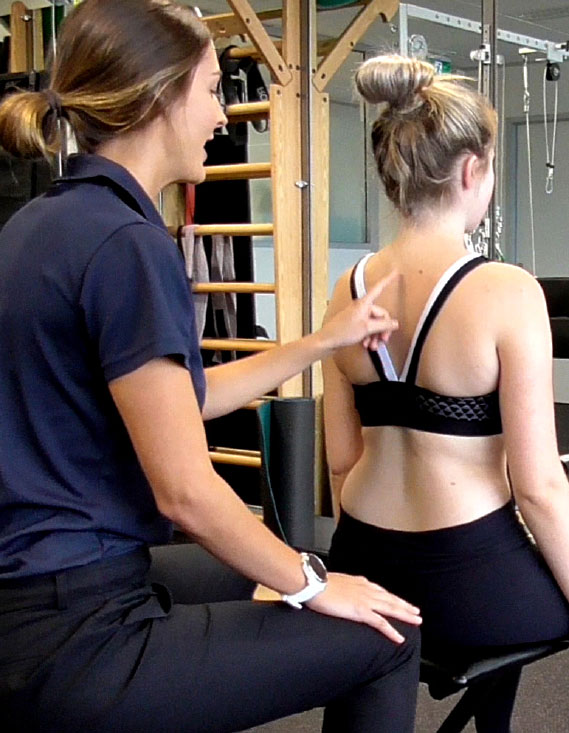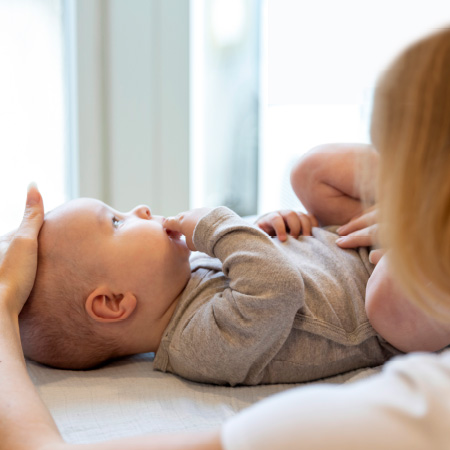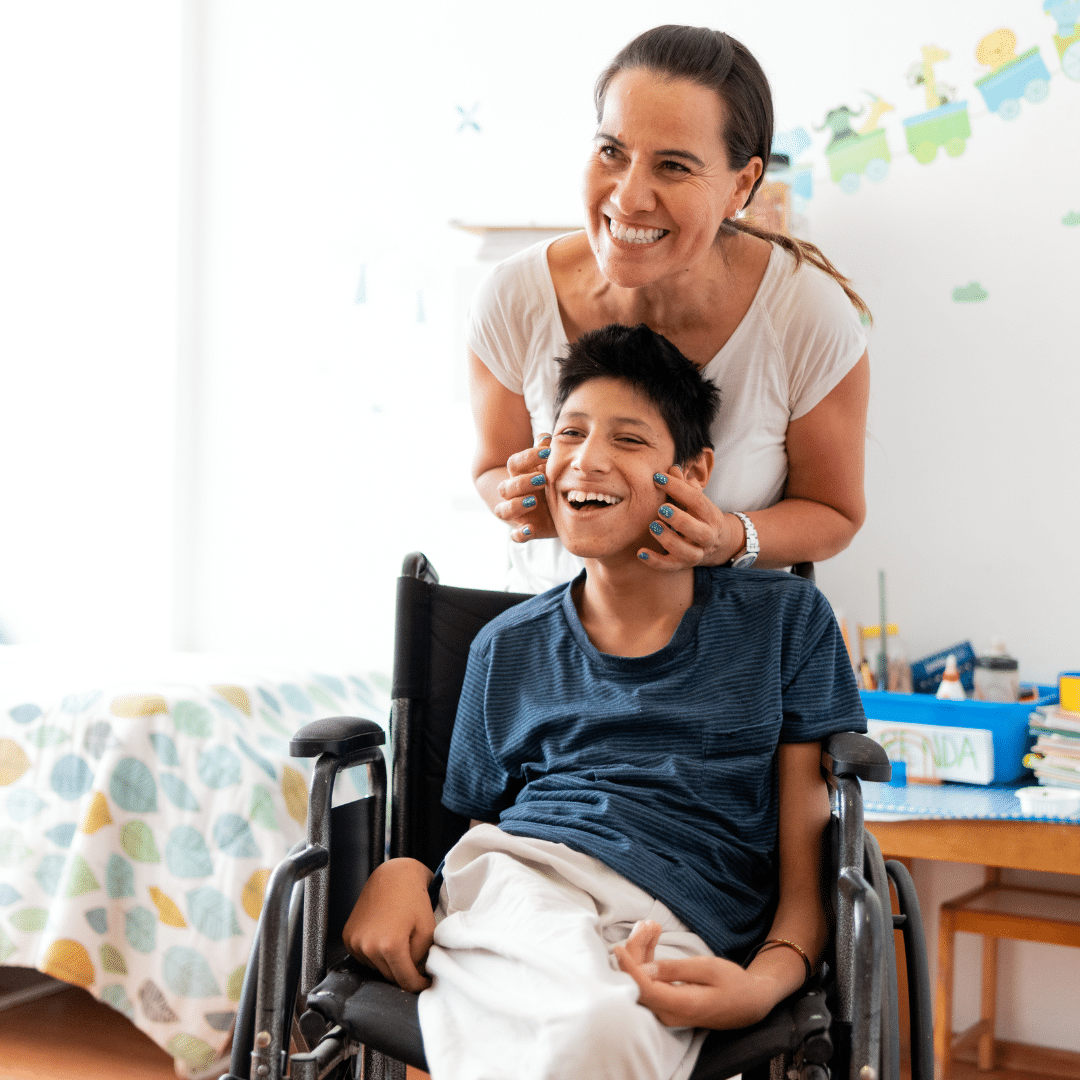What is Scoliosis?

Introduction
The most commonly found type of scoliosis in children is called “adolescent idiopathic scoliosis”. Idiopathic means “of unknown origin”. Although the exact underlying trigger is not known, we do know that as the spine grows the bones of the spine change shape causing the curvature to worsen.
The most common type of scoliosis overall is in adults. This type of scoliosis is called degenerative de novo scoliosis and is caused by asymmetrical wear and tear (degeneration) of the spinal bones called vertebrae. Adults can also have pre-existing adolescent idiopathic scoliosis that can either be stable or progressive. Although adult scoliosis is the most common form of scoliosis, it is under-recognized.
More focus is usually placed on children with scoliosis because of how rapidly the scoliosis can progress during periods of spinal growth. If the scoliosis progresses to a large degree, spinal fusion surgery may be required to stabilize the spine in an attempt to stop progression of the curvature in adult life.
How is scoliosis assessed?
Choosing the right treatment for scoliosis relies on first being able to accurately assess and measure it. Accurate assessment of scoliosis cases is one of the most important steps in achieving the best outcomes for a patient.

Idiopathic scoliosis
Idiopathic scoliosis is usually first seen in children between the ages of 10 and 12. However, it can occur in younger children aged 4 to 10 years (juvenile scoliosis) and in babies aged 0 to 3 years (infantile scoliosis).
The effects of idiopathic scoliosis include poor posture, shoulder humping, and pain. In rare cases, untreated idiopathic scoliosis can lead to heart and lung problems.
If scoliosis is detected and treated early, patients can avoid these symptoms in many cases. If left untreated or treated incorrectly, scoliosis can require surgery. In surgical cases, the bones of the spine are sometimes fused together and metal rods are inserted to try to straighten the spine. In most cases, if the scoliosis is detected and treated early enough, bracing and scoliosis specific exercise can be used to stop the scoliosis from worsening and help a patient avoid surgery.
Adult scoliosis
In adults, pain and poor posture are the most common complaints. Ongoing progression can also be an issue. Often regularly prescribed treatments for the pain associated with adult scoliosis do not help or only help temporarily. Fortunately, new treatments such as the adult brace and intensive scoliosis exercise rehabilitation offer these patients new hope.

Neuromuscular Scoliosis
Neuromuscular scoliosis is a type of scoliosis that develops due to problems with the muscles and nerves that help control posture and movement. Unlike other forms of scoliosis, which might be idiopathic, neuromuscular scoliosis is usually specifically linked to an underlying pre-existing neurological or muscular disorder such as cerebral palsy, muscular dystrophy or spinal muscular atrophy.
Early detection and appropriate management are essential to help minimize the impact of neuromuscular scoliosis and prevent potential complications. Depending on the individual case, patients with neuromuscular scoliosis may have non-surgical treatment options available, such as custom-designed braces. Scoliosis-specific exercise rehabilitation, such as ScoliBalance®, may also be used in conjunction with bracing treatment when the patient has some level of neuromuscular control over their torso.
Types of scoliosis
Infantile scoliosis is most often seen in boys and accounts for less than 1% of idiopathic cases. The most common curve type is a left curve.
When a right curve is present, particularly in girls, this usually indicates a poorer prognosis. Sometimes these cases can resolve spontaneously, sometimes they can progress to a more severe scoliosis. Depending on the case, the treatment of infantile scoliosis may involve observation, manual therapy, bracing, serial casting, and as a last resort, surgery.

Juvenile scoliosis is more often seen in girls than boys. In children between the ages of 4 to 6 years, the rate is fairly equal between the two sexes. However, between the ages of 6 to 10 years, the rate is much higher among girls. It is seen more frequently than infantile idiopathic scoliosis, but it is less common than adolescent idiopathic scoliosis.
Children with juvenile scoliosis generally have a high risk of progression of their curve. Seven out of ten children with this condition will worsen and require active treatment. Juvenile curves almost never resolve spontaneously. They usually require bracing, and many will go on to require surgery.

Like other types of scoliosis AIS is characterized by an abnormal sideways S or C curve of the spine. Children with AIS are generally otherwise healthy. AIS is the most common type of scoliosis with approximately 4% of all children between 10 and 18 years old developing it. AIS is more commonly seen in girls than boys – 90% of scoliosis cases are girls. AIS often begins to develop at the initial onset of puberty becoming more apparent as is worsens during growth spurts.
AIS has a better prognosis than juvenile scoliosis, but can still progress to become a significant spinal deformity if it is not detected early and properly managed. It is not uncommon for adolescents with large curves or curves that progress quickly to develop some back pain. The most effective non-surgical treatment is bracing but for smaller curves specialized scoliosis specific exercises may be appropriate.

Adults with ASA may not have previously been diagnosed with adolescent scoliosis. ASA may be progressive or stable, depending on the individual case. In those with a previous diagnosis of AIS, monitoring progression is easy as a comparison of current x-rays to adolescent x-rays can be done. In those where the scoliosis is discovered in adulthood, determining if the scoliosis is a pre-existing adolescent condition or a new onset of degenerative scoliosis can be difficult.
DDS usually develops in middle-aged and older adults and is typically seen starting around 45 years of age onwards. As DDS is a result of degenerative instability, it is almost always progressive. However, the main complaint usually associated with DDS is lower back pain.

The treatment and management of neuromuscular scoliosis requires a comprehensive approach tailored to each patient's unique needs. Non-surgical treatment options, such as bracing and physical therapy, aim to slow the progression of scoliosis and improve the patient's quality of life. Surgery may be considered when the spinal curvature is severe, rapidly progressing, or causing significant functional impairment, pain, or other issues that cannot be effectively managed with non-surgical treatments.
The importance of a personalized treatment approach tailored to each patient’s specific needs and disease severity cannot be underestimated.


